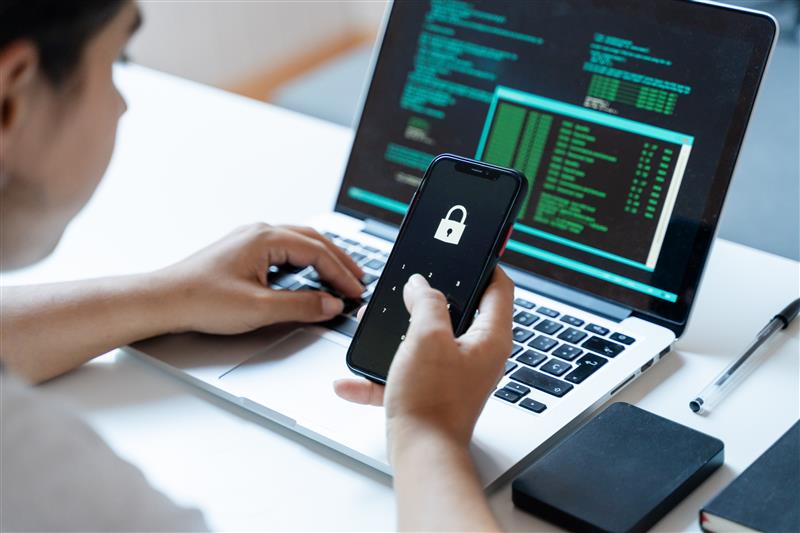4 Easy Tips That Level Up Your Identity Theft Protection

Identity theft protection needs are growing—what you need to know
With the increased use of smartphones and shifts towards online shopping, our digital footprints are growing larger and larger. These new technologies make our lives easier and more connected—which also, unfortunately, means that identity theft has grown as well. Thieves have more opportunities to find information about their targets online and can expand their reach for attacks and other bids to get personal information like Social Security numbers which can lead to identity theft.
Proactive identity theft protection is one of the ways that you can manage the risk of your identity being stolen from your online activity. No one wants to go through the process of recovering their Social Security number, and the damage that a thief can do is extensive.
While there isn’t an easy fix for protecting yourself, in addition to considering a product like IDShield to monitor your accounts, here are some tips on how to keep you and your family safe online and offline:
1. Think before you share
One of the common ways that identity theft occurs is by a social engineering attack or another request for information. It may seem harmless when your bank calls you and asks for your information—but it’s important to look deeper. Your sensitive information such as your address, passwords to online accounts, credit card numbers, and Social Security numbers can be compromised if you share them online or over the phone. If someone calls you asking for this information, even if they claim to be part of a company that you work with, stop before you share and verify their identity.
If you’re unsure, you can always hang up and call them back after calling the company in question directly about the query—use the phone number on their website and ask about their policies. If you weren’t expecting a call, even from a company you do regular business with, it’s always a good idea to be cautious to protect your information.
Sharing your personal information online can also expose you to additional risk. Email phishing attacks are one of the more common ways that hackers and thieves will try to trick you into sharing information. When you receive an email from an institution that typically requires personal information, like your bank, read the email carefully. You can hover over hyperlinks in emails to check that they match the website of the company. And if in doubt, the safest way to check the status of your account is to call the company directly or log into the website without clicking any links.
2. Watch out for public Wi-Fi
Sometimes on vacation or on the go, you do need to check your email or get some work done—but be wary of thieves that use your need to their advantage. A Wifi thief can set up a fake hotspot in a popular area, and any unprotected data sent over the fake Wi-Fi network can be stolen by the hacker. If you absolutely need to use a public Wi-Fi network, keep these tips in mind:
- Verify the network before joining. Does it match the coffee shop or location you’re at?
- Avoid accessing any important personal information while on public Wi-Fi. Save checking your bank account or applying for a new credit card until you’re at home at your secured computer. If you absolutely must look, consider using your mobile data instead of joining a network.
- Use a VPN. VPN stands for a virtual private network, and a VPN tool can create a private network from a public internet connection that encrypts (obscures) your data from any unwanted onlookers.
Another important note about using your computer in public places is to be careful of the information you show on your screen, even if you follow all of the tips above. You never know when someone may look over your shoulder and learn something about you that they can use to their advantage.
3. Be security savvy on social media
Social media may seem like a fun place to catch up with your high school friends and share photos of your vacation, but to an identity thief, it can be an easy place to farm information. Think about it, many popular websites use security questions to verify your identity beyond a password or to reset a password. With enough information about where you live, where you grew up, your family, and what you like to do a hacker has a lot of ammo to use to either try to hack your accounts or to launch another bid to get your personal information.
While we can’t expect everyone to stop sharing their lives on social media, there are some ways to protect yourself from the wrong people taking advantage of your information. Check your security settings. In most major social media platforms, you can customize what information you share. Setting your posts so that only your friends can see them helps reduce the number of eyes on your information.
Think before you post. Take a quick look at photos to make sure information isn’t showing on screens in the background of your selfie, or that your license plate number isn’t showing in your vacation shot. While some of this information might seem harmless when showing it to your friends, it can sometimes fall into the wrong hands. Don’t accept friend requests from people you don’t know. A seemingly innocent profile can end up being a scammer trying to get information from you or listen in on what you’re posting.
4. Don’t forget about your paper trail, too
While the growth of our digital lives has contributed to the growth of identity theft, it’s still important to consider the more physical opportunities that thieves may take. When you receive bank statements or other personal information in the mail, make sure to shred personal information soon after reading it. Keep documents that you need for reference in a secure place out of sight of curious eyes, such as a filing cabinet, instead of on your desk.
If you’re expecting a document from your bank in the mail, it’s also important to promptly remove it from your mailbox if you don’t have a locking mailbox. That way you can reduce the risk that a thief will grab your mail before you do—and the information they want inside of it.
Identity theft protection is easier with IDShield
Following these tips can help you put together a plan on how you can protect your personal information and make it harder for an identity thief to steal your identity. With identity theft protection software on top of safe security practices, you can feel confident that you have comprehensive protection.IDShield helps you:
- Monitor your credit and catch suspicious new activity quickly
- Scan the dark web for your email address/account information
- Alert you of any suspicious activity on your social media, financial accounts, and more
- Scan social media posts for inappropriate information that could hurt your employment or professional image
Sometimes, identity theft still happens. With IDShield you can feel confident that our comprehensive restoration services and policies will help you restore your identity quickly with a professional team who can guide you through any threats to your identity.
IDShield is a product of Pre-Paid Legal Services, Inc. d/b/a LegalShield (“LegalShield”). LegalShield provides access to identity theft protection and restoration services. For complete terms, coverage and conditions, please see an identity theft plan. All Licensed Private Investigators are licensed in the state of Oklahoma. This is meant to provide general information and is not intended to provide legal advice, render an opinion, or provide any specific recommendations.



